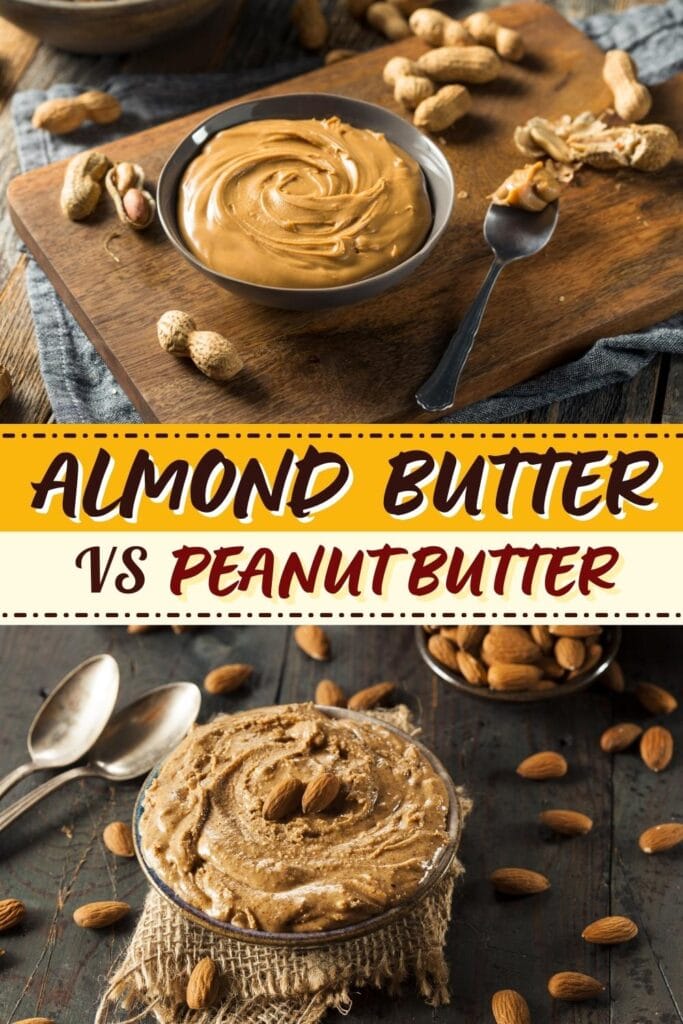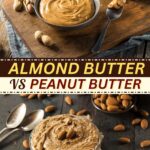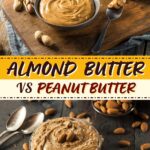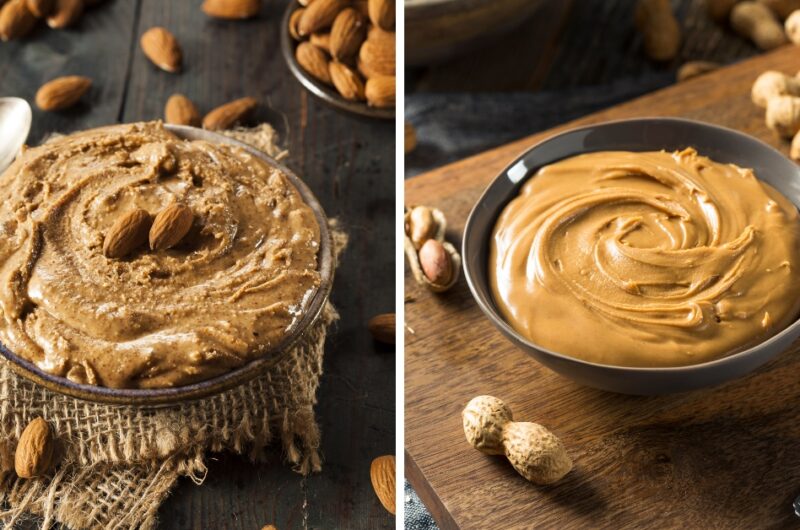Today, we’ll compare almond butter vs. peanut butter to help you decide which one might suit you better.
So let the battle of the nut butters begin!
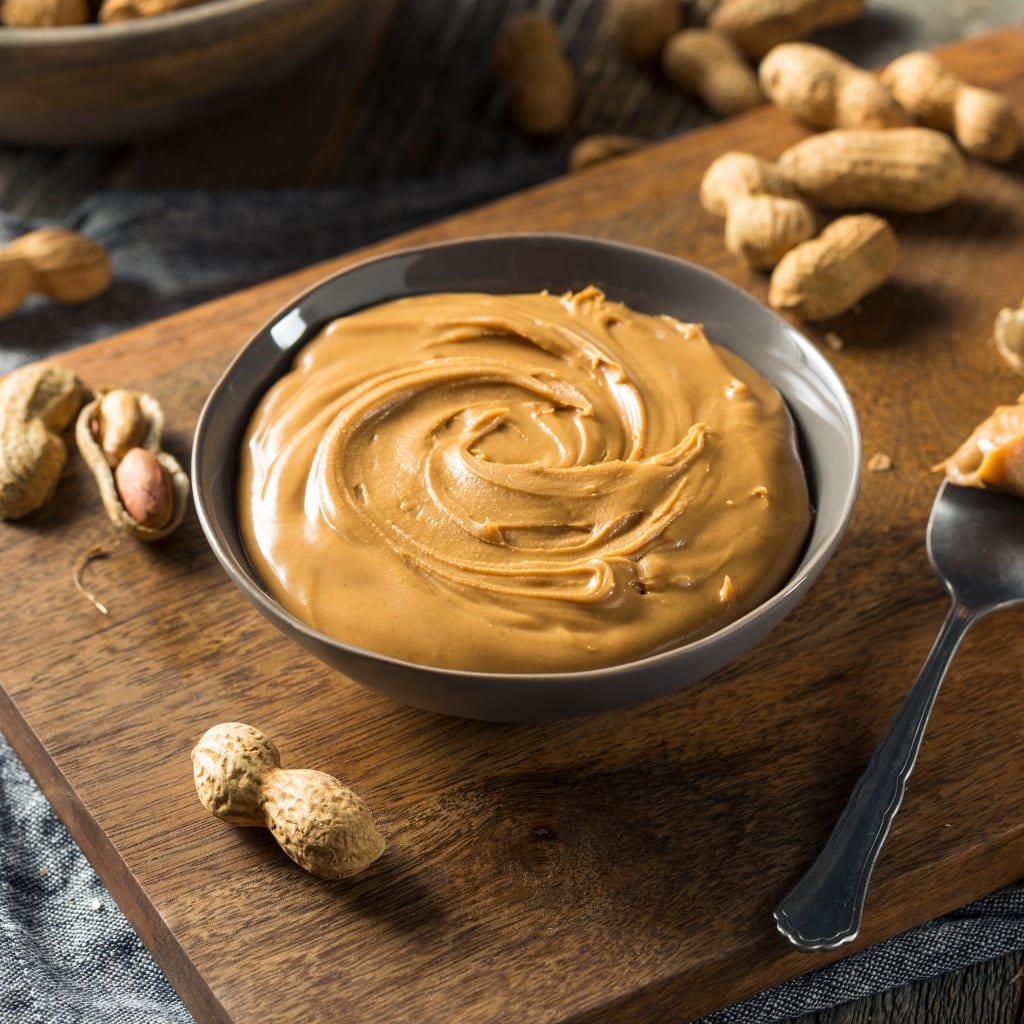
Peanut butter has been around for ages. But today, more and more people are trying different types of nut butter.
And almond butter is one of the most popular and readily available.
Although they have many similarities – like being excellent sources of healthy fats and vitamins – they also have some key differences.
So if you’re wondering what almond butter vs. peanut butter looks like, you’re not alone.
And that’s why I’m going to take a deep dive into the topic- so you don’t have to!
What is Almond Butter?
Almond butter is made from ground raw or roasted almonds.
They’re processed in a high-power food processor until they turn into a smooth and creamy paste.
Some almond butters are flavored with salt, honey, or cocoa powder.
This versatile spread can be used in many different ways. For example, it’s excellent on toast, in smoothies, or as a peanut butter alternative in baking.
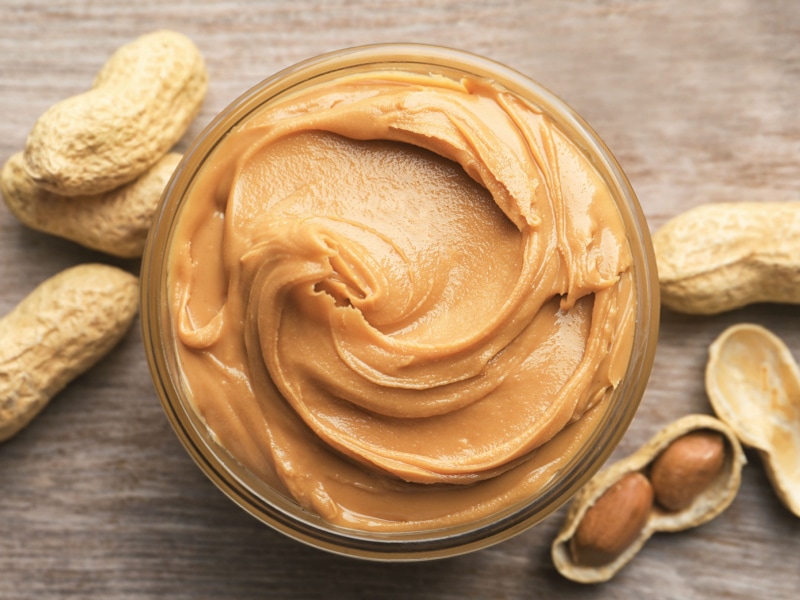
What is Peanut Butter?
Peanut butter is a popular nut butter made from ground, dry-roasted peanuts.
It comes in creamy or crunchy types, the latter of which has little bits of nuts mixed through for added texture.
Peanut butter is often flavored with honey or salt.
There are no limits when it comes to recipes involving this incredible spread.
Toasts, sandwiches, smoothies, or even just straight up on a spoon – the possibilities are endless!
Also, fun fact: peanuts aren’t nuts – they’re legumes.
Though their flavor and texture are nutty, they belong in the same family as chickpeas and lentils.
So if you want to add legumes to your diet, peanut butter is a great option.
Almond Butter vs. Peanut Butter: Taste and Texture
While similar, some distinct flavors and textures set peanut butter and almond butter apart.
Are you someone who loves the sound of crunching peanuts when you bite into a sandwich? If so, you’ll appreciate how textured peanut butter is.
Plus, its salty-sweet flavor is satisfying.
That said, it does come smooth, too, so there are no crunchy bits at all. And this kind of peanut butter is usually all one color, very thick, and completely smooth.
In contrast, even smooth almond butter isn’t totally smooth. Instead, it’s a little bit grainy because of the almonds.
It’s also available in crunchy form.
However, I think almond butter has a richer, nuttier taste.
But in the end, it’s more a matter of your preference for one nut over the other.
Almond Butter vs. Peanut Butter: Which is Healthier?
Peanut butter and almond butter are both pretty healthy in moderation. But, of course, too much of anything isn’t ideal.
That said, they have similar nutritional content, including calories and sugar.
So let’s take a closer look at each nut butter to try and figure out which is better or if they’re mostly the same.
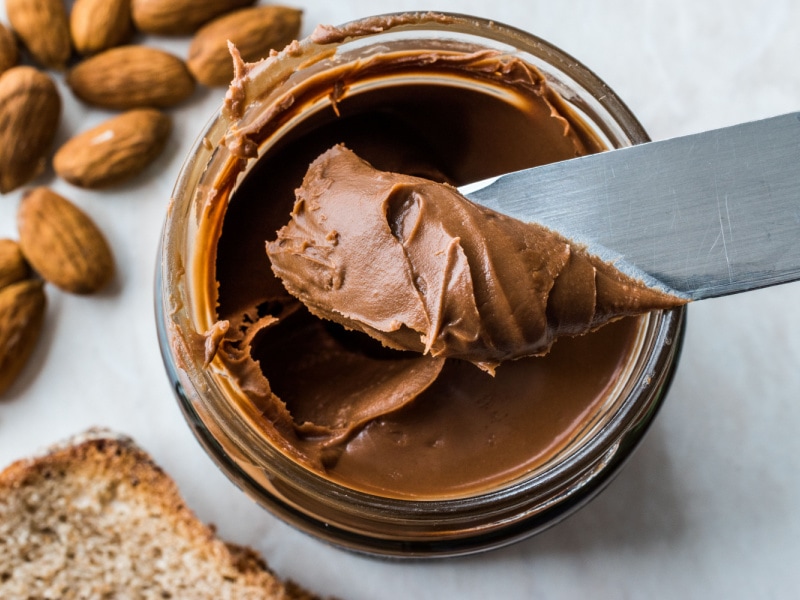
Health Benefits of Almond Butter
Almond butter is high in antioxidants and omega-3 fatty acids.
It is also rich in vitamins and minerals such as calcium, potassium, vitamin E, folate, and magnesium.
Furthermore, compared to peanut butter, almond butter has the following:
- More healthy fats: almonds contain more naturally-occurring fats than peanuts.
- A 2-tablespoon serving of natural almond butter has 19 grams of fat, whereas the same amount of natural peanut butter only has 16 grams.
- Less sugar: while not significantly higher, peanuts contain more naturally occurring sugar than almonds.
- A 2-tablespoon serving of natural almond butter has 0.0 grams of sugar, whereas the same amount of peanut butter has 2.
- Higher micronutrient content: almond butter is richer in vitamin E, calcium, iron, and magnesium than peanut butter.
- In terms of calories, almond butter has more or less the same as peanut butter.
- A 2-tablespoon serving of peanut butter contains 200 calories, while almond butter has 202.
They’re also similar in carbohydrate content. Two tablespoons of almond butter has 6.8 grams of carbs, while peanut butter has 6.
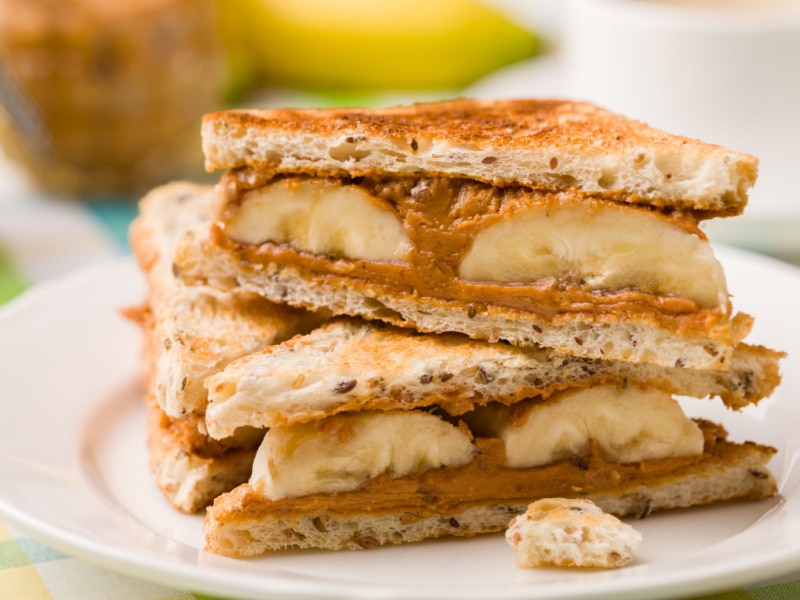
Health Benefits of Peanut Butter
Peanut butter has long been a go-to staple in many American households, and for good reason.
This thick spread is chock full of healthy benefits for people of all ages. Here’s why:
- It’s high in protein and healthy monounsaturated and polyunsaturated fats. These are important for heart health.
- Peanut butter provides nearly 20 vitamins and minerals, such as B vitamins, manganese, copper, and folate.
And compared to almond butter, peanut butter is:
- Higher in protein: Legumes are higher in protein than nuts.
- A serving of natural peanut butter has 10 grams of protein, while almond butter only has 4.8.
- Richer in fiber: a serving of peanut butter has 2 grams of fiber, while almond butter has 1.2.
Almond Butter vs. Peanut Butter: Price
Peanut butter is sold at a lower price point than almond butter.
That’s because peanuts are grown in more regions around the world and at a much cheaper cost.
On average, almond butter costs around 40-65 cents per ounce. In contrast, peanut butter is only 10-15 cents per ounce.

Almond Butter vs. Peanut Butter: Which is Better?
If you forget about the similarities and ignore the price, it’s hard to define which is best between almond butter and peanut butter.
So ultimately, it comes down to personal preference.
For example, I really enjoy the grainy texture in almond butter and find it works wonderfully well in baked goods.
But I prefer peanut butter in smoothies because of its smooth texture.
I suggest trying each to find which you prefer. Because depending on individual dietary needs, both options can be beneficial.
But until then, here are a few facts:
- Peanut butter is slightly lower in calories and saturated fat, and it contains a higher amount of protein.
- Almond butter has more vitamins and minerals and higher levels of healthy fats.
- Peanut butter might be the better choice for someone looking for a creamy spread that’s indulgent but familiar.
- Almond butter is great for those looking to up their essential nutrient intake in a tasty way.
But since they’re both so similar, consider this:
If budget is an issue, go for the much cheaper choice: peanut butter.
Again, at the end of the day, no one nut butter is better than the other. Peanut butter and nut butter are glorious in their own ways.
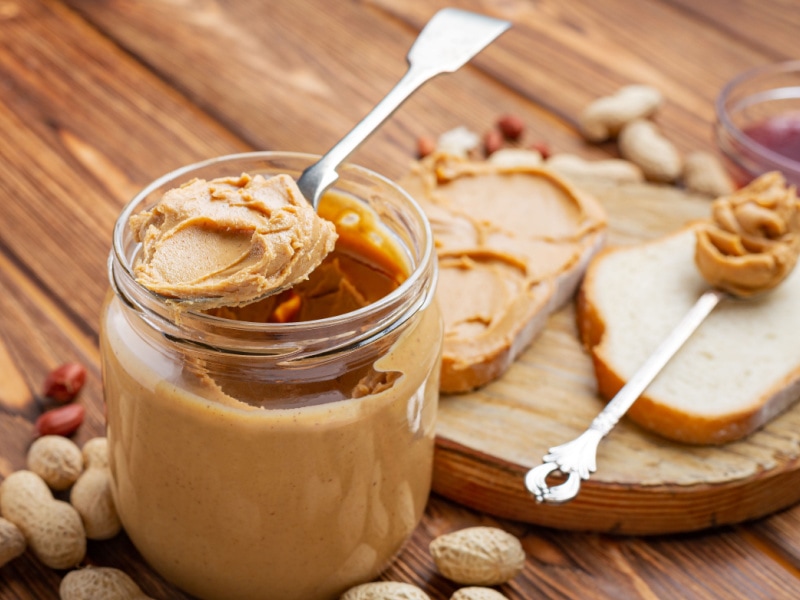
Almond Butter vs. Peanut Butter: The Facts
1. Almond butter is made from roasted almonds, while peanut butter is made from dry roasted peanuts.
2. Almond butter is a little grainy with a strong almond taste, while peanut butter is sweeter with a mildly salty flavor contrast.
3. Almond butter contains more fat than peanut butter.
4. Almond butter contains less sugar than peanut butter.
5. Almond butter contains more vitamin E, calcium, iron, and magnesium than peanut butter.
6. Peanut butter has slightly fewer calories than almond butter.
7. Peanut butter is higher in B vitamins than almond butter.
8. Peanut butter is higher in protein.
9. Peanut butter is richer in fiber.
10. Peanut butter is cheaper than almond butter.
